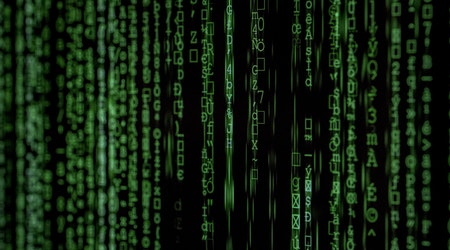Monitoring how occupants and tenants use energy can result in savings — and sometimes immediate payback on the cost of such analysis
Information from utility meters and customer submeters provides much more than just total usage and cost data. Some facility executives are using meters and data handling systems to cut energy costs and recoup more money from both tenants and government agencies.
Electric meters for commercial and institutional facilities typically measure both use and the rate of use. Usage, called consumption, is defined by the number of kilowatt-hours received during a billing period, which is usually a month. The maximum rate of use, called peak demand, is determined by the highest kilowatt level measured during the billing period.
Most utilities measure peak demand by counting the kwh in a 15- or 30-minute period and dividing by the length of that period, defined as a percentage of an hour. For example, 2,000 kwh used in 15 minutes — a quarter of an hour — yields a billed peak demand of 8,000 kw. In some parts of the country, peak demand accounts for roughly half the electric bill, so understanding how fast a facility uses power may be just as important as knowing how much electricity is being consumed. Some real estate personnel mix up these terms, using kw when they mean kwh. Confusing the two units has cost a few of them dearly.
Experience with routine monthly monitoring of meter data shows potential savings between 2 percent and 15 percent, with most results in the single digits. For customers spending a million dollars on energy annually, that’s $20,000 or more a year. The cost for such analysis should be only a fraction of that amount, yielding an immediate payback on the effort. As data handling becomes more sophisticated — through submetering, interval data review and linking with operations in near real-time, for example — savings may rise.
Energy data is only valuable when it’s converted into useful information, such as invoices, usage trends, potential savings, options for cost recovery and planning for growth. To make that conversion, personnel experienced in analyzing energy data, preferably equipped with appropriate software, are essential. Training for such techniques and software is available through professional organizations, including the Association of Energy Engineers and energy services firms.
With such expertise in hand, start by reviewing how energy costs are allocated among tenants, departments and other occupants. When only a single utility meter is in use, most facilities apportion costs based either on a square footage formula, plus a portion of common area usage, or through one-time surveys of occupant loads and assumed operating hours. Before negotiating another lease or allocation, consider installing temporary or permanent submeters on the largest tenants to assess how accurately such methods are working. Occupant peak loads change over time and, in some cases, may have always been responsible for a greater percentage of the total building use than was assumed. The same may be true for operating hours: modern electronic submeters record the time of usage in intervals, showing when and how fast energy is being used. Where time-of-use electric rates and high demand charges are in effect, this information alone may open the door to adjusting an occupant’s share of the electric bill.
Meter Service Options
Whenever possible, permanent submeters should become the basis for internal monthly energy billing. Experience shows that merely receiving a monthly energy bill results in lower consumption — more than 20 percent lower in a few cases — and sometimes lower peak demand. Such revenue-grade electronic submeters may also be used to verify the utility meter’s reading. In one case, catching and correcting one large error in a utility meter nearly covered the annual cost for submetering. Such cost may, depending on lease terms, be added to tenant or department energy bills, making submetering a self-financing effort over time.
In many cities, private meter data service providers install and read submeters. In a few states, utility metering has been deregulated, allowing replacement of utility meters with more modern and more useful equipment. In New York and California, metering service providers are now certified to handle such tasks. See the state’s Public Utility Commission Web site for a list, or find one.
A free document with background information on modern metering and data analysis technology is available.
The Bucks Keep Coming
Submetering may also provide the basis for improving indirect cost recovery at institutions performing federally supported activities, such as research. Those facilities are reimbursed for a portion of the operating and maintenance expenses related to those activities. Unless otherwise determined, those operating and maintenance costs are based on the usual percentage square footage formula, regardless of the intensity of usage. At one university, using data from submeters significantly increased the indirect cost recovery for that facility.
Reducing peak demand by billing tenants for their demand as well as their consumption may translate into avoided costs for power distribution reinforcement or expansion, as well as better terms when purchasing deregulated electricity. Sudden changes to usage seen on a submeter may reveal operating problems such as equipment or controls failures, steam leakage, or open windows. Such anomalies might also indicate potential problems with loads that are approaching or exceeding the capacity of transformers, pipes and other infrastructure.
Reviewing usage and demand for portions of a building or campus, instead of lumping it all on one utility meter, may help plan facility expansion and budgeting. Some facility executives have used such data in the development, for example, of on-site distributed generation systems for critical loads.
Many large facilities having only one electric account may already have some “free” utility submetering. As facilities grow, utilities may add new electric services, each with its own meter, and simply add that meter to the existing bill. A quick review of the meter readings on an electric bill will show how many utility meters are in use. In large buildings, utility meters may exist on individual electric risers or transformers, potentially allowing segregation based on end usage. In one case, a utility meter was found to monitor only lighting loads, all of which were fed by a single riser. Data from that utility meter was used to prove savings from a lighting upgrade. Where electric distribution diagrams are not available to show how loads are separated by riser or transformer, an electrician can use a signal tracing system to determine which loads are being seen by each meter.
With utility permission, a “shadow” meter or data logger may be connected to output ports on some utility meters that allows a customer to monitor in real-time the power passing through that meter. While far from perfect, this option is often a first good step toward understanding how a building uses its power over time.
Where a performance contract is involved that is based on claimed energy savings, such meter data collection may help enforce the contract. Surveys of energy managers have found that difficulty finding and measuring such savings is one of the leading reasons such contracts are contested.
Getting Sophisticated
Complex facilities having multiple HVAC systems, concentrated usage, such as that on trading floors, and process loads, including computers, labs and food service equipment, have benefited from analysis of interval data from time-of-use meters. That process focuses attention on how power is used during 15- or 30-minute intervals across days, months and even years. Such analysis provides detail much greater than available using only monthly meter readings.
Using such techniques, even highly efficient facilities can find ways to further trim peak demand, eliminate off-peak energy waste, and correct controls malfunctions. What’s more, where power costs exceed the national average of 8 cents per kwh, this process may be cost-effectively pursued with the help of a consultant or training of in-house personnel. When applied in real time, such data may be used to automatically control some building systems to minimize peak demand charges.
Getting a good handle on hourly load profiles may also lead to cheaper power in deregulated electric markets. Without access to a customer’s actual load shape, power marketers routinely use standard utility customer load profiles that may — or may not — be appropriate. Customers whose operations run 24/7, or involve unusual HVAC systems like thermal storage or gas-fired chillers, often have load profiles quite different from those used by utilities to develop tariff pricing. Some large customers have used detailed load profile data to show why their use of power should cost less to serve and have secured lower power prices from marketers as a result.
In another case, close analysis of data from multiple meters at a single building resulted in a switch from individual utility metering to a master account meter. Previously used as an apartment building, the facility had been converted to offices that were all part of one firm. More than 100 separate electrical accounts were maintained, but all bills were paid by the firm’s centralized accounting staff. Office managers were not responsible for power use, losing much of the value of the existing metering.
Finding Wasted Dollars
The internal cost to handle and pay those electric bills was significant: studies of invoicing costs found them to be $5 or higher per account each month, resulting in a “hidden” cost exceeding $6,000 a year. In addition, each account had a base service charge of about $12 per month that was levied even when an office was empty. Because of churn and growth within the firm, some offices were empty for months at a time, resulting in an additional $15,000 a year in wasted dollars.
Overlaid on that waste was the differential in electric rates between the utility and the power marketer serving the firm’s larger accounts. Because the existing meters were simple electromechanical units with no demand or time-of-use capability, standard utility profiles applied. In some deregulated power markets, a portion of the electric rate is based on an installed capacity charge that defines the peak demand of a small customer based solely on consumption during several summer months in the prior year. That charge may be 5 percent to 20 percent of the total bill. The total charge for the building was therefore based on several assumptions that did not apply to this facility — but the existing metering would not allow any change to it.
When a temporary master time-of-use and demand meter was installed, actual peak coincident demand was found to be about 30 percent lower than the total derived demand used by the utility to set its power pricing. An examination of the base, consumption and demand rates that would apply to a large commercial account replacing the 100 small accounts revealed overall savings sufficient to cover the cost to convert to master metering.
Such goodies do not always fall only into the landlord’s lap. During several submetering installations, tenant electric services were found to be serving some common areas, including lighting in hallways, stairwells and rest rooms, resulting in a few tenants paying directly for costs that should have been shared by all tenants or paid solely by the landlord. Appropriate refunds became part of pending lease renewal negotiations.
In another case, a landlord who was unaware of this circuiting peculiarity paid for a lighting upgrade of common-area lighting — but saw no savings. The tenants, however, all saw their electric bills drop — at no cost to them.
Lindsay Audin is president of EnergyWiz, an energy consulting firm based in Croton, N.Y. He is a contributing editor to Building Operating Management.












